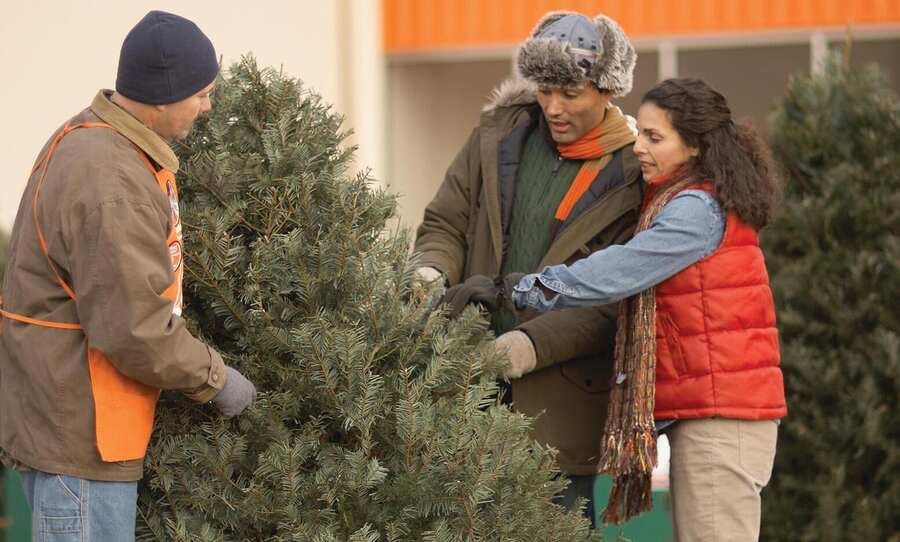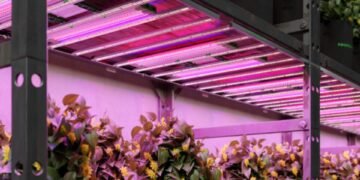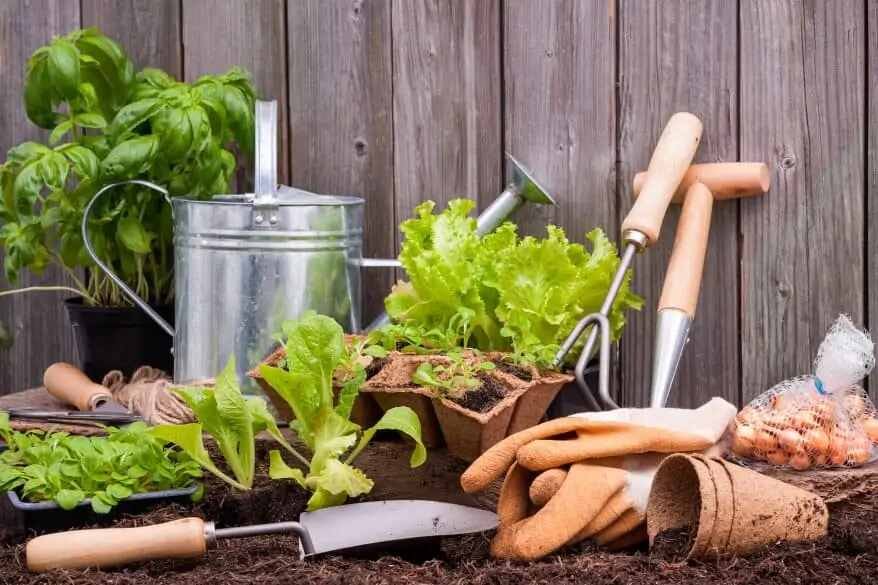In the spirit of holiday traditions, the choice between a real Christmas tree and its artificial counterpart has become a topic of debate. While artificial trees may offer convenience, they lack real Christmas trees’ authentic charm and eco-friendly benefits. This article explores the environmental impact of both options and sheds light on sustainable alternatives.
The Environmental Cost of Artificial Trees
As the tradition goes, a freshly chopped real Christmas tree is brought inside the house and decorated with garlands and ornaments. You can smell its scent, filling the room with the smell of Christmas. However, more and more people have decided to switch to a more convenient and cheaper substitute for real Christmas trees – artificial trees that look the same as a toilet brush. But are they the better choice for the environment?
Plastic Predicament
The average Christmas tree needs around a decade to reach the right height before being taken down and displayed for a few days on Christmas. People think that’s a waste of trees, so they switch to fake Christmas trees.
Another opinion on the topic is that it’s barbaric to take down a tree and decorate it with lots of ornaments as if you are mocking it while it slowly dies in your living room. One thing is sure: fake trees don’t smell like the real deal unless you hang a dozen car air fresheners on them. And they aren’t even slightly close to the term “eco-friendly”.
If you believe fake trees are greener just because you’ve stuck with the same one for years, let’s set the record straight. Once you realise these “impostors” are crafted from non-biodegradable plastic, your perspective might take a delightful turn.
Since these artificial Christmas trees are made from various components, they can’t be recycled. So, here’s the deal: once you toss them, those fake trees are like forever guests at the landfill.
And let’s not forget the energy-guzzling production process these plastic Christmas trees undergo. It’s a whole environmental saga that might raise an eyebrow or two. You have to use the same tree for twenty years before it matches the carbon footprint of a farmed real Christmas tree.
Plastic Christmas trees are extremely flammable as well. If a fire breaks out, a fake tree will burn faster compared to its real counterpart, releasing toxic fumes into the air. That’s why it’s important to take precautions to avoid a house fire during the holiday season.
Health Hazards
Artificial trees are not only bad for the environment, but they might pose a threat to your health. Some of them may contain metal toxins like lead. Prolonged exposure to this toxin may cause damage to the central nervous system, kidneys and other vital organs.
Now, it’s worth mentioning that while the risk of lead exposure from artificial Christmas trees exists, it is generally considered low under normal conditions. However, you may want to be cautious if you have young children or a heightened sensitivity to lead.
You can limit potential health risks linked to artificial trees by following these tips:
- Wash hands after handling – Wash hands thoroughly after handling artificial Christmas trees, especially before eating.
- Keep children away – Place artificial trees out of reach of young children to minimise the risk of them touching or ingesting any lead-containing materials.
- Ventilation – Ensure good ventilation when unpacking or setting up artificial trees to minimise exposure to any off-gassing from the materials.
- Consider alternatives – If you feel uneasy about lead exposure or other health risks, maybe consider alternatives such as real Christmas trees or those made from non-toxic materials.
Although the health hazards linked to artificial Christmas trees are generally low, it’s never a bad idea to be aware of potential risks. Not to mention that by taking precautions, you can help secure a safe and enjoyable holiday season.
If you want to be extra safe, real Christmas trees are suitable for your health and the economy. They are biodegradable, recyclable, and can be used to make compost or as material for small do-it-yourself projects.
Real Christmas trees grown in farms and nurseries produce oxygen. One acre of these trees can produce the daily oxygen requirements for 18 adults. That’s pretty impressive compared to the fake trees that are good at collecting dust and emitting toxins.
Sustainable Holidays with Real Christmas Trees
Now that you’re familiar with the potential environment and health hazards of artificial Christmas trees, you might want to consider other options.
Even if it seems like a less eco-friendly alternative, real Christmas trees are better. There are different ways you can get your tree before the holidays begin, and they’re all convenient.
Living Christmas Trees
Some Christmas tree companies offer solutions to those who still want a real Christmas tree but think it’s not worth cutting one. They offer pot-grown Christmas trees that can be replanted in your garden, the park or the forest once the holidays are over.
This is a sustainable way to enjoy the holidays. Moreover, you can still have a real Christmas tree without cutting it and later throwing it in the dumpster. Pot-grown trees stay fresh and green throughout the holidays, filling your home with that unforgettable fir scent.
Responsible Farming Practices
Other companies offer real Christmas trees from nurseries and tree farms. You might wonder what’s the good in this if they are only going to cut down another tree.
More than 60 million trees are grown in these farms and nurseries just to sell them for Christmas. Once a tree is cut, two or three new ones are planted in its place. It’s a win-win situation.
These companies offer real Christmas tree delivery, installation and collection. This is a sweet deal for people living in big cities like London.
Once the holidays are over, you call the Christmas tree company, and they come and collect the tree. They will drop it off at the nearest recycling centre or use it to make compost for gardens. This means you take from nature and you give something back.
The Environmental Benefits of Real Christmas Trees
If you still need convincing as to why you should opt for a real Christmas tree this year, there are a few other reasons why they are the eco-friendly superheroes of the holiday season. Here’s why switching to real trees is both festive and good for Mother Earth:
- Biodegradable magic – Real Christmas trees are like nature’s confetti. They biodegrade, meaning they break down naturally over time. Unlike artificial trees, which are often made of materials that hang around in landfills forever, real trees leave a smaller, more eco-friendly footprint.
- Green renewal – Christmas tree farms are like tree nurseries for the holiday season. They grow trees as a crop, ensuring that for every tree chosen for holiday glory, a few more are planted in its place. It’s like a renewable resource party that keeps the forests happy and thriving.
- Recycling adventures – Real Christmas trees have a cool afterlife. Many communities have recycling programs where old trees get turned into mulch or help control erosion. Some tree companies even scoop up your used tree and give it a second life as compost or other green goodies.
- Oxygen love – Living Christmas trees are not just festive; they’re like little oxygen factories. Through photosynthesis, they absorb carbon dioxide and dish out fresh, clean oxygen. Those tree farms and nurseries? They’re like the unsung heroes fighting for cleaner air.
- Local love – Picking a real Christmas tree means giving a high-five to local businesses. Tree farms create jobs and keep the local economy buzzing. Plus, the journey from a nearby farm to your home is often a smaller carbon dance than the long-distance travel of artificial trees from far-off factories.
- Carbon footprint tango – Real trees might have a little dance of emissions from growing and transporting, but when you compare it to the production journey of artificial trees, they often come out as the eco-friendly dance champions. It can take years of using the same artificial tree to offset the environmental impact of its creation.
- Post-holiday adventures – Real Christmas trees don’t retire after the holidays; they embark on new adventures. Chip them for mulch, use them for erosion control, or let them star in your next DIY project. Their versatility is like a bonus round of eco-friendliness.
Conclusion
In the holiday spirit of Christmas, real trees emerge as eco-friendly heroes.
Beyond their festive allure, real trees biodegrade, support renewable growth, and participate in recycling programs. They double as oxygen providers and boost local economies. Compared to the environmental toll of artificial trees, the choice is clear.
So, this holiday season, let’s celebrate with tradition and a conscious nod to sustainability. Choose a real Christmas tree — a symbol of joy that gives back to the planet we call home.
Recommended Posts:
















